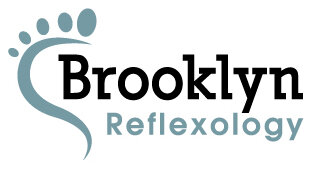Knowing the major muscle groups (Pt1)
We have close to 320 pairs of muscles in the human body. That means we have a staggering 640 named muscles in total throughout the body! Up until the 18th century however, muscles were not given a nomenclature but assigned a number as a way of identifying them. Two anatomists by the name of William Cowper and James Douglas are credited for changing this.
Some muscles are better known within the context of a group, such as: the rotator cuff muscles, the hamstrings, and the quadriceps. But in fact, each of these muscle groups contain four individually named muscles. While it’s not important to know every named muscle in the body, there are key muscles and muscle groups that everyone should be familiar with. The first part of this article will focus on four of the key muscles depicted in the diagram. We’ll cover these superficial and easily accessible muscles first before delving into the slightly deeper layers of muscle beneath them in part two.
Trapezius: One of the most superficial of the upper back muscles. The “traps” as they’re often referred to are a flat, shawl-like muscle that cover the back of the neck, tops of the shoulders, and middle of the back. When you place your hands on top of someone’s shoulders to give them your best shoulder rub, you’re predominantly grasping the upper fibers of the trapezius. The word “trapezius” is Greek for “small table,” which reflects its four-cornered shape (the right trapezius in the diagram has been removed to show the deeper layers). The muscle is segmented into upper, middle and lower fibers, each capable of performing several actions. All segments of the muscle perform retraction of the shoulders as their main function.
The upper fibers perform:
extension of the head and neck
lateral flexion of the head to the same side
rotation of the head and neck to the opposite side
elevation of the scapula
upward rotation of the scapula/arms
The middle fibers perform:
stabilization of the scapula
The lower fibers perform:
depression of the scapula
upward rotation of the scapula/arms
The upper traps play a big role in supporting the weight of the head and neck during all its movements. So poor postural habits that keep the head and neck pitched forward can greatly over-tax these muscles. The middle traps are strong stabilizers of the scapula when we have our arms out in front of us.
Deltoid: Much like the trapezius, the deltoids are also a segmented muscle which cover the outer shoulder like a cap. The name comes from the Greek letter “delta” which resembles the shape of a triangle. The deltoids have an anterior, lateral, and posterior set of fibers. It’s for this reason that they’re usually referred to in the plural form, “deltoids.” Also like the traps, each segment is capable of several actions. All fibers, especially the lateral fibers, perform abduction (moving the arm up and away from the body) as their main function.
The anterior fibers perform:
flexion of the shoulder
medial rotation of the shoulder (moving the arm into the “handcuff” position)
horizontal adduction of the shoulder (with the arm out in front, moving the arm across the front of the body to the opposite side)
The posterior fibers perform:
extension of the shoulder
lateral rotation of the shoulder (with the elbow bent, moving the arm into a “stop sign” position)
horizontal abduction of the shoulder (with arm out in front, moving the arm away from the body)
Triceps Brachii: As the name implies, the triceps have three individual heads: long, medial & lateral. Each of these heads originate on a different part of the arm but ultimately converge into a thick tendon at the elbow. Since they’re the only muscle found at the back of the upper arm, they’re the muscle solely responsible for straightening out the elbow (extension). The head closest to the body, the long head, is also capable of extending the arm back and moving it in close to the body (adduction).
Latissimus Dorsi: The “Lats” as they’re commonly referred to are the broadest of the back muscles. Their name translates into “broad back muscle.” In bodybuilders, well-developed Lats will give the trunk a “V” shaped appearance. Considered a superficial and easily accessible muscle, the Lats originate along the low back, then fan upwards along the sides of the trunk where they insert into the upper arm. Surprisingly, the Lats do more to move the arm than they do the back. Their main functions include:
extension of the arm/shoulder
adduction of the arm/shoulder
medial rotation of the arm/shoulder
Another muscle worth noting along with the Lats is a muscle called Teres Major. The muscle originates along the outside of the scapula and then blends in with the Lats to attach at the same point. Teres Major which translates into “big, round muscle” is often referred to as “Lat’s little helper,” as it’s a complete synergist with the Lats — that is, it performs the exact same movements. Although the Lats do perform one vital function, which Teres Major does not: forced exhalation. Due to its placement, its broad muscle fibers can compress the trunk to aide in quick respiration. The best way to remember their collective actions however is to think of them as the “handcuff muscles.” In order to get your arms behind your back as if to be arrested, both the Lats and Teres Major must contract.
